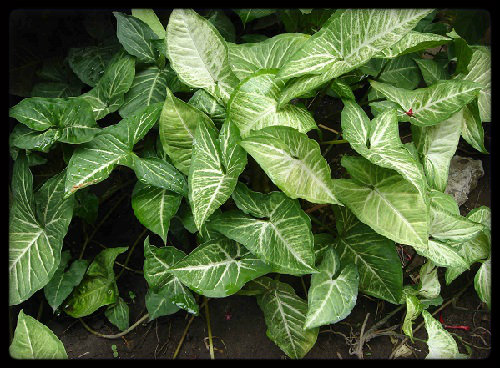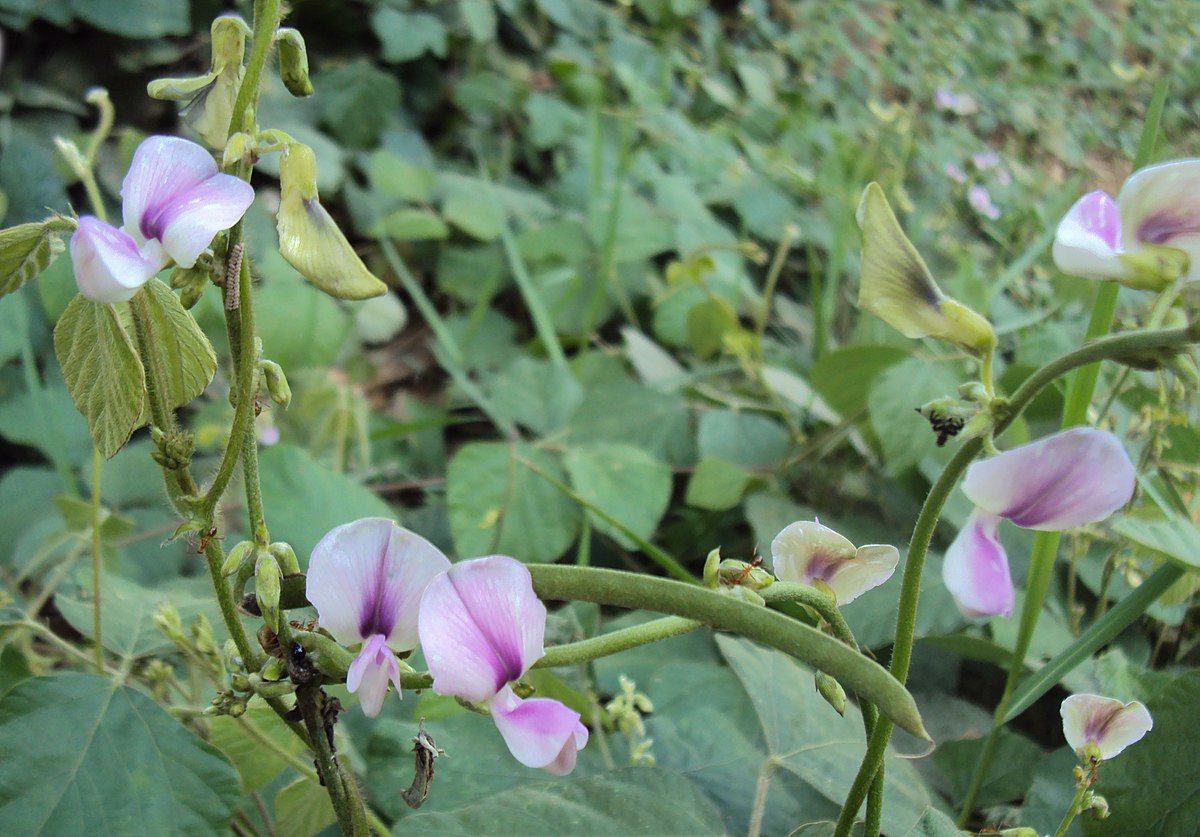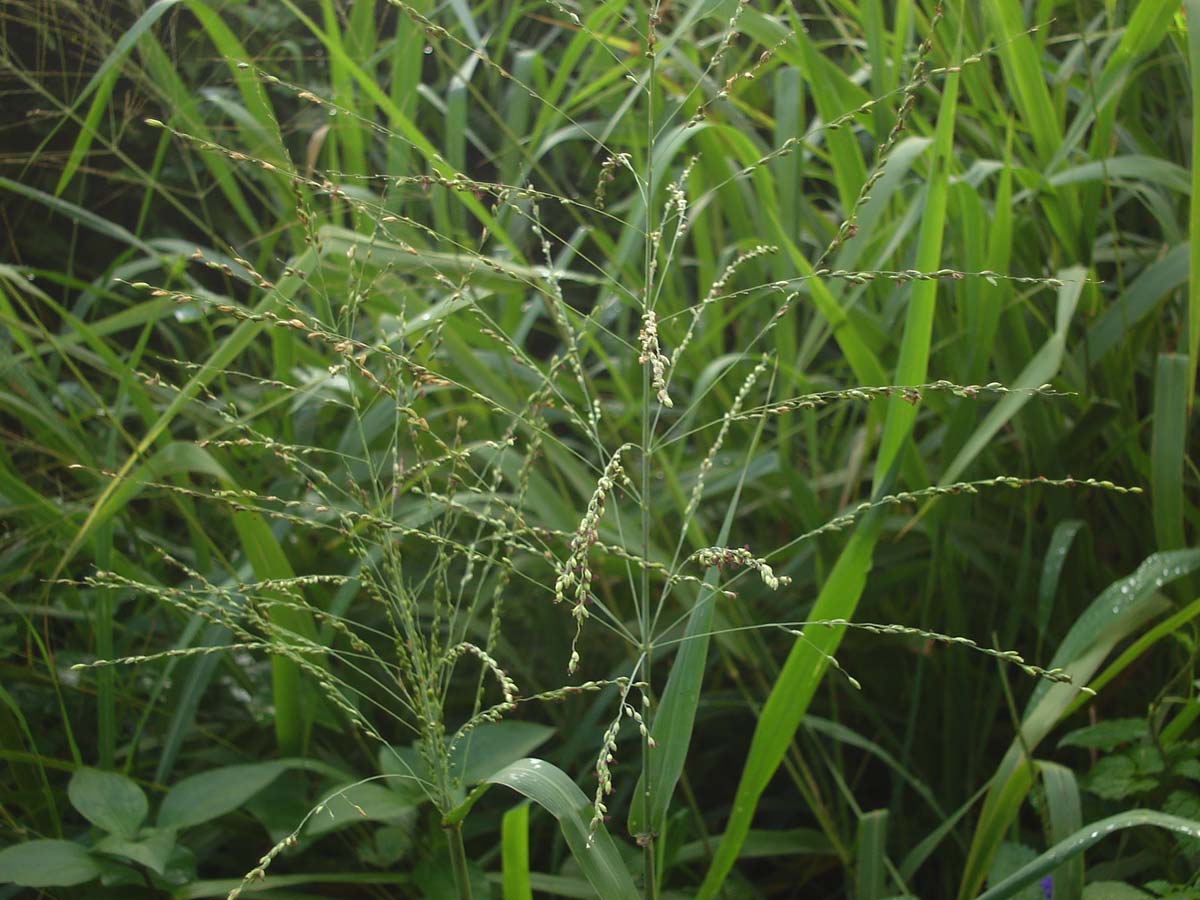Cape Tribulation Tropical Research Station Weed Control
The eradication of invasive plant species and weeds is an ongoing project of Austrop and the research station. These have overrun previously-cleared areas and invaded areas of the rainforest and beaches, eliminating a considerable number of native plants. Rehabilitation and revegetation are vital to the sustainability of this fragile ecosystem and constitute a large part of our conservation work. Weed control is arguably the most important rehabilitation activity in the Daintree. This is as we have a plethora of highly invasive weeds that have the potential to prevent re-forestation of damaged land (especially that cleared in the 1970s). Fortunately we have been introduced to a particular herbicide, Metsulfuron-methyl (MSM) and discovered that it is the best answer to much of our weed control issues. In trials conducted with the able assistance of our volunteers, who assessed the impact of weed spraying on the native flora, we found that 85% of the native rainforest species seedlings (80 were tested) that were exposed to the herbicide were unaffected or, after a minor setback, recovered. Most of the 15% of species affected were pioneer species. As a broad-leaf herbicide, it does not affect grasses, although some burn slightly and then recover. We have done research on its actions and its impact on native vegetation, and this was presented at the 18th Australian Weeds Conference in Melbourne last year (Metsulfuron-methyl impact on native vegetation in the Daintree Lowlands, far north Queensland, Australia. pp 122-125). This is a very time- and labour-intensive activity, but is returning great results.
Singapore Daisy
 Singapore Daisy (Sphagneticola trilobata) has spread at an alarming rate in regions to the south of Cairns (especially the Babinda catchment) and in the Kuranda area, where it seems to have completely taken over enormous swaths in some areas, especially along the Barron River. Many of our beaches in the Daintree that we thought were more-or-less pristine have been seriously infested from material coming down flooded creeks from upstream infestations. Singapore Daisy is very easy to recognise when it's flowering by its bright, yellow flowers; with training and practise, its distinctive, three-lobed leaves can also be recognised. Fortunately, it produces very few seeds. However those produced float downstream in floods and infest the beaches. Above you can view seedlings on Noah beach. Singapore daisy responds well to MSM but glyphosate “just makes it mad!”.
Singapore Daisy (Sphagneticola trilobata) has spread at an alarming rate in regions to the south of Cairns (especially the Babinda catchment) and in the Kuranda area, where it seems to have completely taken over enormous swaths in some areas, especially along the Barron River. Many of our beaches in the Daintree that we thought were more-or-less pristine have been seriously infested from material coming down flooded creeks from upstream infestations. Singapore Daisy is very easy to recognise when it's flowering by its bright, yellow flowers; with training and practise, its distinctive, three-lobed leaves can also be recognised. Fortunately, it produces very few seeds. However those produced float downstream in floods and infest the beaches. Above you can view seedlings on Noah beach. Singapore daisy responds well to MSM but glyphosate “just makes it mad!”.
Vines
Arrow vine
 Arrow vine (Syngonium podophyllum) is rapidly becoming a serious problem, spread by both underground runners and birds. It climbs trees, forming thick infestations. Although it is a hemi-epiphyte, it can become an epiphyte if dense enough and if the roots are cut. It is quite responsive to metsulfuron-methyl, especially during the summer growing season, but requires continuous attention to ensure that there are no buried rootstocks that can re-sprout.
Arrow vine (Syngonium podophyllum) is rapidly becoming a serious problem, spread by both underground runners and birds. It climbs trees, forming thick infestations. Although it is a hemi-epiphyte, it can become an epiphyte if dense enough and if the roots are cut. It is quite responsive to metsulfuron-methyl, especially during the summer growing season, but requires continuous attention to ensure that there are no buried rootstocks that can re-sprout.
Tropical kudzu
 Tropical Kudzu (Pueria phaseoloides) is very closely related to "the vine that ate America's south east", Pueria lobata. The vine produces "ropes" once it is well established. Fortunately, unlike its American cousin, it rarely produces underground tubers, so it is easy to pull out of the ground.
Tropical Kudzu (Pueria phaseoloides) is very closely related to "the vine that ate America's south east", Pueria lobata. The vine produces "ropes" once it is well established. Fortunately, unlike its American cousin, it rarely produces underground tubers, so it is easy to pull out of the ground.
Captain Cook vine
 The famous Captain Cook Vine (Merremia peltata, related to morning glory, swamps trees in disturbed areas with massive wreaths of leaves, which can almost completely shade a tree out and cause it to collapse. In the intact forest,Merremiais a natural part of the forest structure, but in cleared areas (exposed to lots of sun), it can wreak a lot of damage and suppress growth, as can native grapes (Cissus spp.), andTetracera(fire vine).Other than Arrow Vine, Blue Morning Glory(Ipomea indica)and Kudzu, most of our vines are natives. However they can still do a lot of damage. AUSTROP is involved in"DeVine" activities, cutting and poisoning vines in areas being regenerated or rehabilitated. You can almost hear the trees sigh in relief.
The famous Captain Cook Vine (Merremia peltata, related to morning glory, swamps trees in disturbed areas with massive wreaths of leaves, which can almost completely shade a tree out and cause it to collapse. In the intact forest,Merremiais a natural part of the forest structure, but in cleared areas (exposed to lots of sun), it can wreak a lot of damage and suppress growth, as can native grapes (Cissus spp.), andTetracera(fire vine).Other than Arrow Vine, Blue Morning Glory(Ipomea indica)and Kudzu, most of our vines are natives. However they can still do a lot of damage. AUSTROP is involved in"DeVine" activities, cutting and poisoning vines in areas being regenerated or rehabilitated. You can almost hear the trees sigh in relief.
Other herbicide-sensitive weed species
These include Lantana, tobacco weed (Elephantopisis mollis), Brilliantasia lamium, morning glory (Ipomea indica, fishbone fern (Nephrolepsis spp) and philodendron
Grasses
Guinea grass
 The settlers who cleared land in the 1970s for cattle grazing (a very short lived enterprise) introduced several species of Para grass from Argentina (Brachiaria spp) which thrive in wet and flooded environments, and are allelopathic, meaning the plant suppresses the germination of all other species by secreting chemicals in the soil which inhibit the growth of other plants. As a result hundreds of hectares of land in the Daintree look like lush pasture, but are actually fields of''Brachiaria, with almost no visible regeneration having occurred in 40 years. Fortunately it is a wonderful grass to regenerate through, as after flattening and spraying with glyphosate, it produces a thick mulch bed, which greatly reduces weeding and conserves soil moisture. The graziers also introduced Guinea grass (Panicum maximum) from Africa. Guinea grass is an aggressive, fast growing tussock-forming grass than can easily reach 3 meters height and can climb up trees. Its rapid growth tends to shade-out and crowd-out small seedlings. As a grass for regeneration, it is far more difficult to deal with than Brachiaria. Guinea grass often reaches three meters in height, and is a clumping grass. However when flattened by stomping and sprayed, it produces a wonderful and long-lasting mulch.
The settlers who cleared land in the 1970s for cattle grazing (a very short lived enterprise) introduced several species of Para grass from Argentina (Brachiaria spp) which thrive in wet and flooded environments, and are allelopathic, meaning the plant suppresses the germination of all other species by secreting chemicals in the soil which inhibit the growth of other plants. As a result hundreds of hectares of land in the Daintree look like lush pasture, but are actually fields of''Brachiaria, with almost no visible regeneration having occurred in 40 years. Fortunately it is a wonderful grass to regenerate through, as after flattening and spraying with glyphosate, it produces a thick mulch bed, which greatly reduces weeding and conserves soil moisture. The graziers also introduced Guinea grass (Panicum maximum) from Africa. Guinea grass is an aggressive, fast growing tussock-forming grass than can easily reach 3 meters height and can climb up trees. Its rapid growth tends to shade-out and crowd-out small seedlings. As a grass for regeneration, it is far more difficult to deal with than Brachiaria. Guinea grass often reaches three meters in height, and is a clumping grass. However when flattened by stomping and sprayed, it produces a wonderful and long-lasting mulch.
Garden Introductions
Yellow Heliconia
![]() We contend with multiple garden escapees, the yellow Heliconia (Heliconia psittacorum) from Central America is fast becoming a serious weed of waterways and damp locations. This was unexpected, as we don't have hummingbirds the pollinator in their native areas. However we DO have Sunbirds which do much the same job.
Unfortunately, short of cutting each of the stems and putting a drop of gelled Roundup upon them or wreaking Roundup vengeance on everything in their general area, they are very hard to control. The list of exotics here is large; luckily bromeliads have not found a pollinator.
We contend with multiple garden escapees, the yellow Heliconia (Heliconia psittacorum) from Central America is fast becoming a serious weed of waterways and damp locations. This was unexpected, as we don't have hummingbirds the pollinator in their native areas. However we DO have Sunbirds which do much the same job.
Unfortunately, short of cutting each of the stems and putting a drop of gelled Roundup upon them or wreaking Roundup vengeance on everything in their general area, they are very hard to control. The list of exotics here is large; luckily bromeliads have not found a pollinator.
Coconuts
Coconut palms crowding an Australian beach
 Coconuts do not appear to have reached the Daintree until the 1930s, when the early settlers on the coast built humpy houses near the beaches and planted small plantations. In the 1970s the pace of planting quickened with the 1980s seeing even more coconut planting and invasive species appearing. For the Cape Tribulation region it has been estimated that there are at least 17 cultivars. Coconut seeds have very large food reserves. A young plant can attain considerable size before it needs an effective root purchase. Most of the varieties are highly fecund, with virtually all nuts sprouting. They quickly generate an impenetrable thicket around the parent plant. The dense fronds suppress existing native vegetation and prevent new growth. The fall of very large dead fronds adds to the shading effect (and smashed natural regrowth). It is possible that coconuts are also somewhat allelopathic. Are coconuts native?? See online article,
Here. Native foreshore littoral species (Scaevola, Sophora, hibiscus, etc.) hang over the high tide margin, and act as shock absorbers in heavy seas. In areas invaded by coconuts, the seawater is channelled between the coconut trunks, which offer very little flow resistance, and the sand gets washed out. This is well documented in the case of the Christmas Tsunami in Asia. Natural beachside vegetation (Littoral forest) at Cape Tribulation Beach is shown above. It constitutes a mix of Sophora, Hibiscus and the like, which act as shock absorbers in strong wave conditions. Coconuts don't. Littoral rainforest, as it is such a narrow strip along the beaches, is probably the rarest form of rainforest in Australia - and the first to be destroyed for beach developments. It also seems to get the least protection.
Coconuts do not appear to have reached the Daintree until the 1930s, when the early settlers on the coast built humpy houses near the beaches and planted small plantations. In the 1970s the pace of planting quickened with the 1980s seeing even more coconut planting and invasive species appearing. For the Cape Tribulation region it has been estimated that there are at least 17 cultivars. Coconut seeds have very large food reserves. A young plant can attain considerable size before it needs an effective root purchase. Most of the varieties are highly fecund, with virtually all nuts sprouting. They quickly generate an impenetrable thicket around the parent plant. The dense fronds suppress existing native vegetation and prevent new growth. The fall of very large dead fronds adds to the shading effect (and smashed natural regrowth). It is possible that coconuts are also somewhat allelopathic. Are coconuts native?? See online article,
Here. Native foreshore littoral species (Scaevola, Sophora, hibiscus, etc.) hang over the high tide margin, and act as shock absorbers in heavy seas. In areas invaded by coconuts, the seawater is channelled between the coconut trunks, which offer very little flow resistance, and the sand gets washed out. This is well documented in the case of the Christmas Tsunami in Asia. Natural beachside vegetation (Littoral forest) at Cape Tribulation Beach is shown above. It constitutes a mix of Sophora, Hibiscus and the like, which act as shock absorbers in strong wave conditions. Coconuts don't. Littoral rainforest, as it is such a narrow strip along the beaches, is probably the rarest form of rainforest in Australia - and the first to be destroyed for beach developments. It also seems to get the least protection.
For more information about weed control in the Daintree area, click Here for an interactive weed slideshow or
Here just to read more about weeds and weed control.

